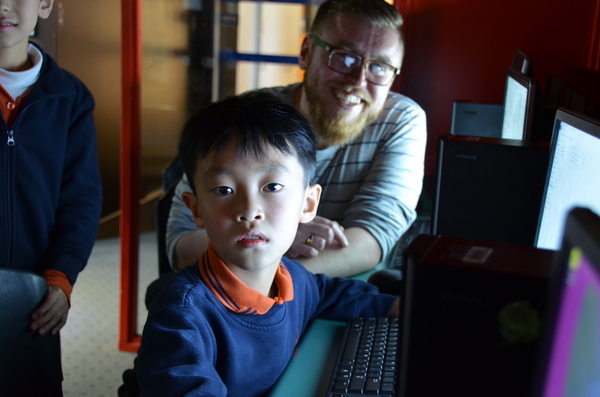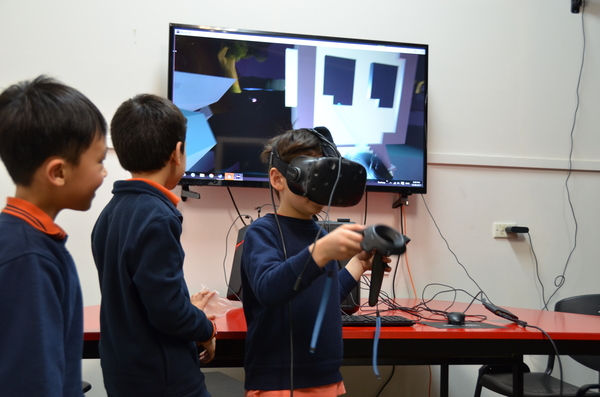By Casey Neill
An online search for the world’s best school led a Singapore father to bring his son to Dandenong North.
Now eight-year-old Seth is not only excelling in his studies at Wooranna Park Primary School, he’s teaching other students.
Principal Ray Trotter said people remembered only a small portion of what they saw and heard.
“We remember 95 per cent of what we teach,” he said.
“You need to activate for it to stick.
“If I tell you that you know things that other people want to know, it builds your self-esteem.”
He said teaching coding to other students – many older than him – was building Seth’s confidence and social skills.
“And to introduce all of our children to the digital world is absolutely crucial now,” Mr Trotter said.
“What Kieran is doing is way out there.”
Students Hassan, Immanuel and Seth leap into virtual reality.
Teacher Kieran Nolan started his working life in network engineering, which took him into schools about 10 years ago.
Then Wooranna Park was looking for “a computer geek”.
His role really took off after he provided a gifted student with books in CISCO – networking – to learn from at home.
“The other kids wanted to do it, too,” Mr Nolan said.
“They started building virtual networks and then physical networks.”
He’d provided them with an old switch and server.
They wanted to add a router to the mix but there was no budget for it.
Mr Nolan had a family friend who needed help with a virus on his computer.
“I had no time but I told him I had some really smart kids,” he said.
“They got his data back and got paid $100 for it and bought a router.
“It’s sort of been organic from there.”
Andrew Kwan is a US-based software developer who mined online currency Bitcoin in the early days.
He’s been to 200 schools across America, Mr Nolan said, and someone from the Blockchain Centre suggested he check out Wooranna Park.
About eight months ago he did just that and told Mr Nolan it was the best school he’d ever seen.
He gifted 21 bitcoins, worth about $30,000 at the time, to further boost the school’s technology offering.
When the Journal visited, the school was conducting an immutable vote on how to spend some of the cash.
Mr Nolan said that rather than making a decision himself, each class could vote on what they thought was worth the investment.
“Everything on the list is stuff that the kids came up with,” he said.
“I expected it to be wacky stuff but it was all cutting-edge.”
He set up a voting system online using blockchain, which is the premise behind Bitcoin.
Mr Nolan said it distributed secure pieces of information to different computers rather than relying on centralised data storage.
“That data belongs to someone else and they can delete it at any time,” he said.
“This technology means that can’t happen.”
A 3D printer was in the lead, ahead of virtual reality, drones and robotics.








